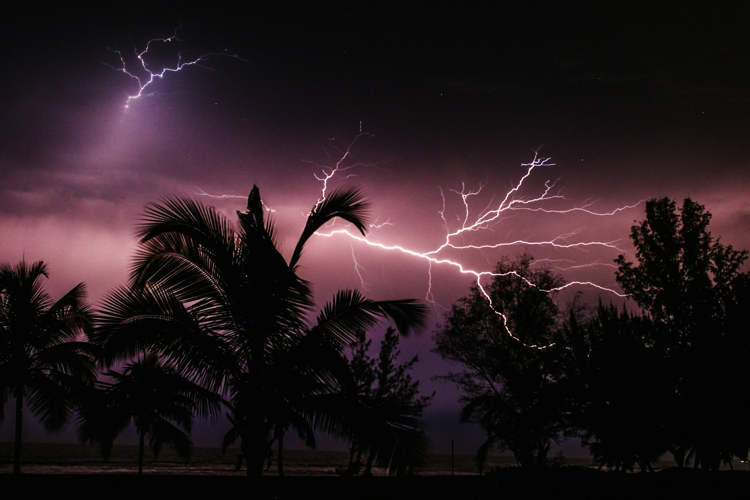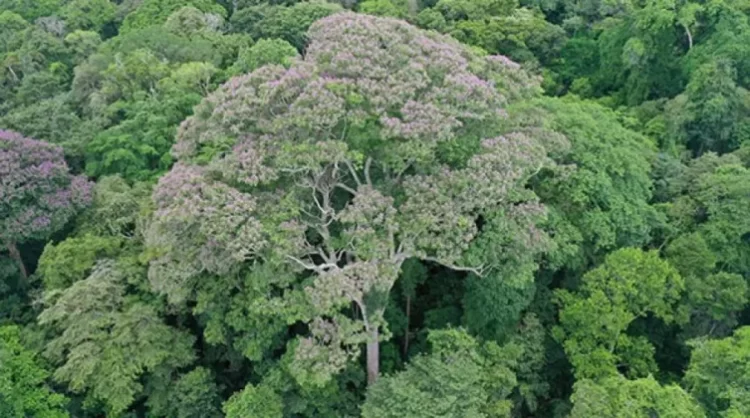Lightning kills most of the trees it strikes, but scientists have discovered a tree species that not only survives lightning strikes but thrives as a direct result of them.
For the longest time, there was a consensus in the scientific community that lightning could only have negative effects on trees. In the best case scenario, a struck tree barely survived, and in the worst case scenario, it was blown to smitherines. But as scientists kept venturing into uncharted territories like the Amazon rainforest and gathering data on new species, theories about lightning-resistant trees began to appear. However, it wasn’t until about a century ago that evidence of such “super trees” was discovered. Today, scientists know of at least one tree species that not only shrugs off multiple lightning strikes in its lifetime but actually attracts lightning and uses its destructive power to kill surrounding trees and hog all the sunlight and surrounding nutrients for itself.

Photo: Bethany Laird/Unsplash
In 2015, while working in Panama, Evan Gora, a forest ecologist at Cary Institute of Ecosystem Studies, came across a remarkable sight – a Dipteryx oleifera tree that had survived a powerful lightning strike with very little damage. The same could not be said about the vine that had entangled it and the dozens of trees surrounding it. The vine had been blasted out of the tree’s large crown almost completely, while all the trees around it had died. After analyzing this unusual sight, scientists deduced that Dipteryx oleifera could easily withstand lightning strikes, but there was no way to be sure.
During their research in Panama’s jungles, Gora and his team came across other Dipteryx oleifera trees, aka almendro trees, that appeared to have thrived after getting struck by lightning instead of dying off like other species. This only reinforced their hunch that there was something special about this tree species, but they decided to prove it scientifically. Using a special lightning location system, the team tracked the outcomes of 93 trees that had been struck by lightning in Barro Colorado Nature Monument, measuring parameters like survival rate, physical condition, parasitic activity, and the death rate of surrounding plant life for a period of two to six years. Their findings were remarkable!
In a scientific paper recently published in the New Phytologist journal, Gora and his team wrote that all the nine Dipteryx oleifera trees included in their research survived lightning strikes with very little damage, compared to the other 84 trees, which suffered severe damage, with 64% of them dying within two years, and almost all of them losing 5.7 more leaves from their crowns.

Photo: Evan Gora / Cary Institute of Ecosystem Studies
The more researchers analyzed almendro trees, the more they became sure that the species not only withstood lightning strikes but thrived because of them. Their data showed that an average of 9.2 neighboring trees were killed when a Dipteryx oleifera got zapped, with the electricity getting transferred through touching branches, vines, or the small gaps between the trees. The lightning also relieved them of about 78% of parasitic vines, giving them more access to sunlight and nutrients.
“These data provide the first evidence that some trees benefit from being struck by lightning,” Gora and his colleagues wrote. “It’s better off for a Dipteryx oleifera tree to be struck than not.”
Researchers suggest that Dipteryx oleifera has evolved to attract lightning. They are extremely tall and have unusually broad crowns, which act as lightning rods, making them estimated to be up to 68 percent more likely to be struck by lightning than the average tree. With an average lifespan of around 300 years, many Dipteryx oleifera get struck by lightning several times during their lifetime ( every 56 years, on average). Surviving one such strike may be considered a fluke, but surviving six or more is anything but. During the study, one of the Dipteryx trees was struck twice in just five years and thrived.
Evan Gora writes that Dipteryx trees tend to be several meters taller than neighboring trees of other species and that trees growing near D. oleifera were 48% more likely to die than those that weren’t. This suggests that the tree is deliberately attracting lightning strikes in order to destroy its rival and ensure optimal conditions for survival and growth.
Scientists have yet to discover how exactly this remarkable tree species can survive lightning strikes that kill any other trees surrounding them, but they suspect it might have something to do with the trees’ high conductivity. They are also interested in other species with similar properties.


0 Comments